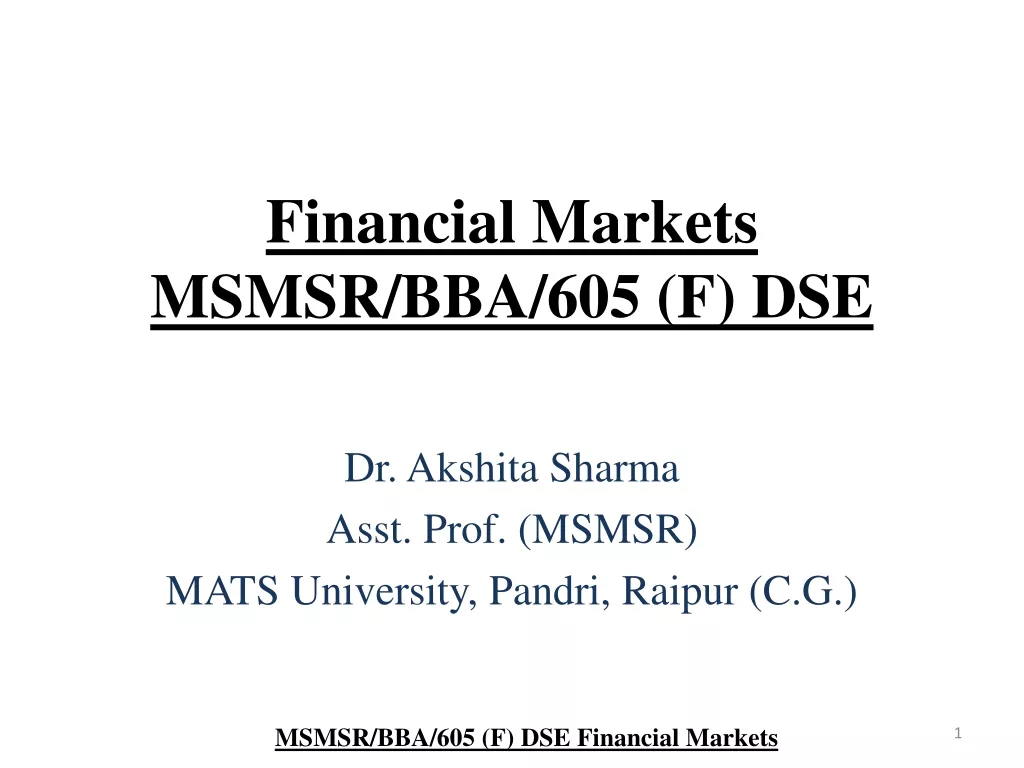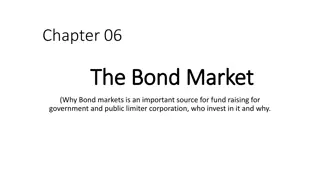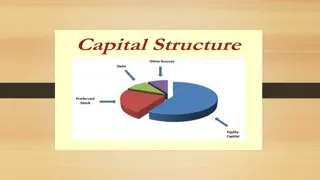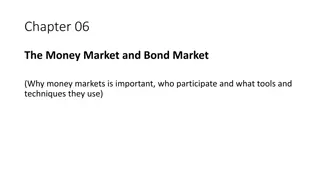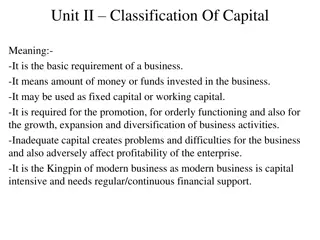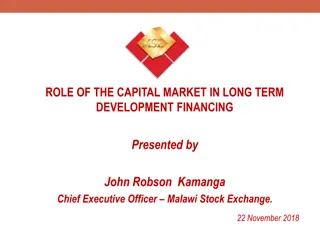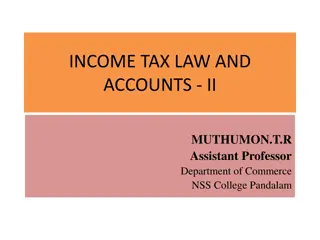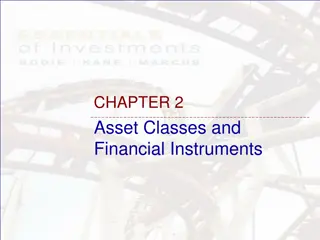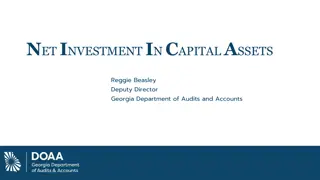
Understanding Capital Markets: Definition, Working, and Types Explained
Explore the world of capital markets, where funding instruments like shares, bonds, and ETFs are traded. Learn about how capital markets function, their role in raising funds for individuals and organizations, and the different types such as primary and secondary markets. Discover the importance and workings of capital markets for economic development and wealth enhancement.
Download Presentation

Please find below an Image/Link to download the presentation.
The content on the website is provided AS IS for your information and personal use only. It may not be sold, licensed, or shared on other websites without obtaining consent from the author. If you encounter any issues during the download, it is possible that the publisher has removed the file from their server.
You are allowed to download the files provided on this website for personal or commercial use, subject to the condition that they are used lawfully. All files are the property of their respective owners.
The content on the website is provided AS IS for your information and personal use only. It may not be sold, licensed, or shared on other websites without obtaining consent from the author.
E N D
Presentation Transcript
StudyMafia.Org Capital Markets Submitted To: Submitted By: Studymafia.org Studymafia.org
Table Contents Definition Introduction Working of Capital Markets Types of Capital Markets Elements of Capital Markets Functions of Capital Markets Limitations of Capital Markets Conclusion 2
Definition A capital market is a place that allows the trading of funding instruments such as shares, debentures, debt instruments, bonds, ETFs, etc. It is a source for raising funds for individuals, firms, and governments. 3
Introduction It is a source for raising funds for individuals, firms, and governments. The securities exchanged here would typically be a long-term investment with over a year lock-in period. On the other hand, short-term investments are usually found in the money market 4
Working of Capital Markets A capital market assists an economy by providing a platform to gain funds for business operations, development activities, or wealth enhancement. The functioning of a capital market follows the theory of the circular flow of money. The market comprises suppliers and buyers of finance, along with trading instruments and mechanisms 6
Working of Capital Markets For example, a firm needs money for business operations and usually borrows it from households or individuals. In the capital market, the money from individual investors or households is invested in a firm s shares or bonds. In return, investors gain profits as well as goods and services. 7
Types of Capital Markets Primary Market The primary market is for trading freshly issued securities, i.e., first-time trading. It enables an initial public offering. It is also known as the new issues market. Here, companies raise funds with the help of preferential allotment, rights issue , electronic IPOs, or the pre-selected issue of securities or private placement 8
Types of Capital Markets Secondary Market The trading of old securities occurs in the secondary market, which occurs after transacting in the primary market. Both stock markets and over-the-counter trades come under the secondary market. We also call this market the stock market or aftermarket. Examples of secondary markets are the London Stock Exchange, the New York Stock Exchange, NASDAQ, etc. 9
Elements of Capital Markets Individual investors, commercial banks, financial institutions, insurance companies, business corporations, and retirement funds are some significant suppliers of funds in the market. Investors offer money intending to make capital gains when their investment grows with time. In addition, they enjoy perks like dividends, interests, and ownership rights. 11
Elements of Capital Markets Companies, entrepreneurs, governments, etc., are fund-seekers. For instance, the government issues debt instruments and deposits to fund the economy and development projects. Usually, long-term investments such as shares, debt, government securities, debentures, bonds, etc., are traded here. 12
Elements of Capital Markets Stock exchanges operate the market predominantly. Other intermediaries include investment banks, venture capitalists, and brokers. Regulatory bodies have the authority to monitor and eliminate any illegal activities in the capital market. For instance, the Securities and Exchange Commission overlooks the stock exchange operations. 13
Elements of Capital Markets The capital market and money market are not the same. Securities exchanged in the former would typically be a long-term investment with over a year lock-in period. Short-term investments trade in the money markets and include a certificate of deposits, bills of exchange, promissory notes, etc. 14
Functions of Capital Markets It mobilizes parties savings from cash and other forms to financial markets. It bridges the gap between people who supply capital and people in need of money. Any initiative requires cash to materialize. Financial markets are central to national and economic development as they provide rich sources of funds. 15
Functions of Capital Markets For example, the World Bank collaborates with global capital markets to mobilize funds to achieve its goals, such as poverty elimination. For the participants, the exchange instruments possess liquidity, i.e., they can be converted into cash and cash equivalents 16
Functions of Capital Markets The International Bank for Reconstruction and Development (IBRD) has assisted over 70 countries by raising nearly $ 1 trillion since the first bond in 1947. Likewise, a report suggested that the European Union companies need to turn to this market to manage their pandemic balance sheet as banks alone will not suffice. 17
Functions of Capital Markets Also, the trading of securities becomes easier for investors and companies. It helps minimize transaction and information costs. With higher risks, investors can gain more profits. However, there are many products for those with a low-risk appetite. In addition, there are some tax benefits obtained from investing in the stock market. 18
Limitations of Capital Markets Investments in shares and mutual funds are deemed risky as the investment is highly volatile due to market fluctuations. Therefore, there is a massive chance of losing money to market risks Market fluctuations risk one s investments and hinder a fixed income. Those who are investing their hard-earned savings, such as retired employees and senior citizens, will prefer the safety of their funds to high earnings 19
Limitations of Capital Markets With the wide range of investment alternatives present in the market, an investor may not make a fruitful choice without professional advice. Trading of securities may involve a brokerage fee, commission, etc., increasing the cost of transactions. 20
Conclusion Capital market is a place where buyers and sellers indulge in trade (buying/selling) of financial securities like bonds, stocks, etc. The trading is undertaken by participants such as individuals and institutions. Capital market trades mostly in long-term securities. 21
Thanks To StudyMafia.org

